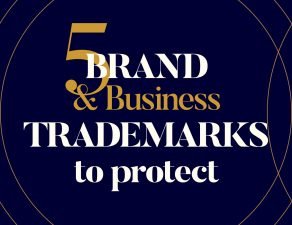
What you need to know about Trademark
What is a Trademark?
A trademark or service mark can be a word, symbol, design, phrase or any combination of these, that identifies your goods or services and distinguishes them from the goods or services of another. Trademarks and service marks are both commonly referred to as marks or trademarks. Trademarks are a vital and valuable part of any successful business, providing protection to both businesses and consumers. By helping consumers determine the source of particular products and/or services, trademarks provide protection against consumer confusion in the marketplace. For businesses, trademarks provide enormous value by building brand recognition, goodwill and reputation, and can account for a significant portion of a companies overall value.
Here are a few examples of how trademarks may exist within a business or brand:
- Company/Business names
- Logos
- Slogans
- Product/Service Names
- Jingles/Songs/Sounds
- Product packaging
A trademark may be aa standard character mark, or special form mark (stylized version of the mark). Standard character trademarks, consist of words, letters, numbers, or a combination of those without a specific font, size, color, or design. Standard character marks protect the words, not how they look or are displayed. Special form trademarks may be stylized, have designs, or in color. These stylized designs protect the way a trademark looks.
What you need to know about trademark ownership
Trademark Ownership vs. Registration
How long does trademark ownership last?
What you need to know about Trademark Registration
Benefits of U.S. Federal Trademark Registration
-
U.S. Federal Trademark Registration constitutes “constructive use” of the trademark nationwide, as of the application filing date.
-
Registration creates a legal presumption that you are the rightful owner of the trademark. The registration certificate serves as proof of ownership in Federal Court, without the need for additional evidence.
-
USPTO database will include you trademark. Providing notice of your trademark ownership and rights to the world.
-
Helps deter others from using or trying to register your trademark or one confusingly similar with the USPTO.
-
Basis for filing for trademark protection in foreign countries.
-
Grants the right to bring a lawsuit concerning the trademark in federal court
-
Grants permission to use the federal trademark registration symbol, ®, with the trademark.
-
Allows you to record your registration with U.S. Customs and Border Protection (CBP), to stop the importation of trademark infringing goods.
-
Trademark owners may license their marks while still retaining ownership, as well as, transfer ownership through a written assignment.
-
Trademark registration can be extremely valuable in your business and brand.
What you need to know about trademark strength
Strength of a trademark
-
Generic – Generic marks are not protectable as trademarks because they identify the common product or service name and not the actual source of the product or service. (WEAK)
-
Descriptive – A descriptive mark merely describes a product or service, or a characteristic of the product or service, rather than the source of the product or service. [Would competitors likely need the word(s) to describe their own products?] (WEAK)
-
Suggestive – Suggestive marks brings to mind an attribute of a good or service without actually describing the attribute, such that the consumer must use their imagination to determine the nature of the good or service. Suggestive marks, are inherently distinct and protectable, although weak. (WEAK)
-
Arbitrary – Arbitrary marks use real word(s) in a way unconnected to the words common meaning. Arbitrary marks are inherently distinctive, one of the strongest marks along the spectrum. (STRONG)
-
Fanciful – Fanciful marks use made up words created solely to function as a trademark. Fanciful marks use words that don’t mean anything in the English language, or archaic words used outside of their common usage. These marks are the strongest type of trademarks. (STRONG)








